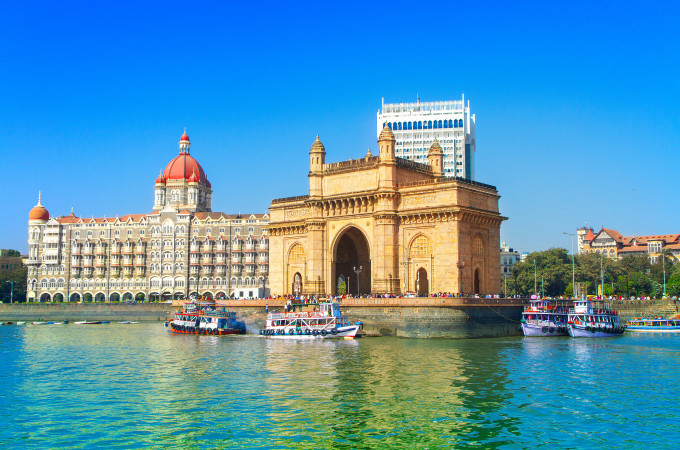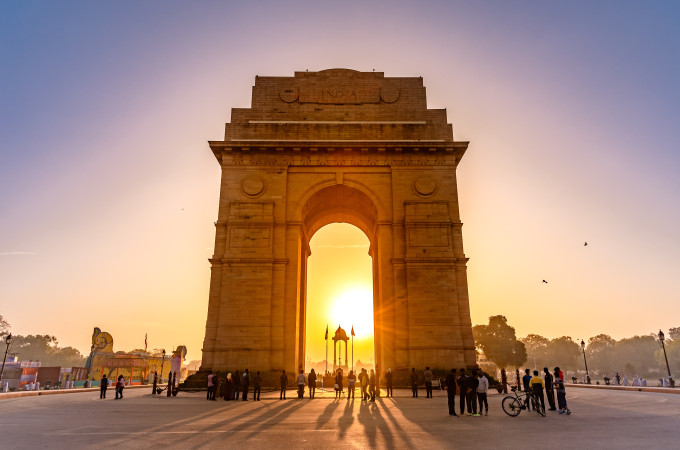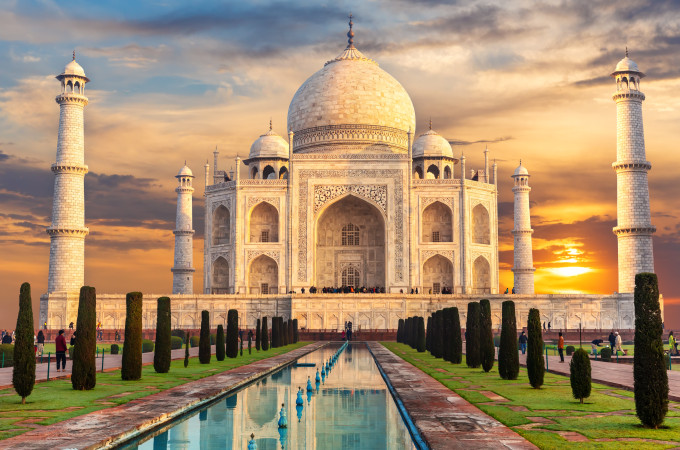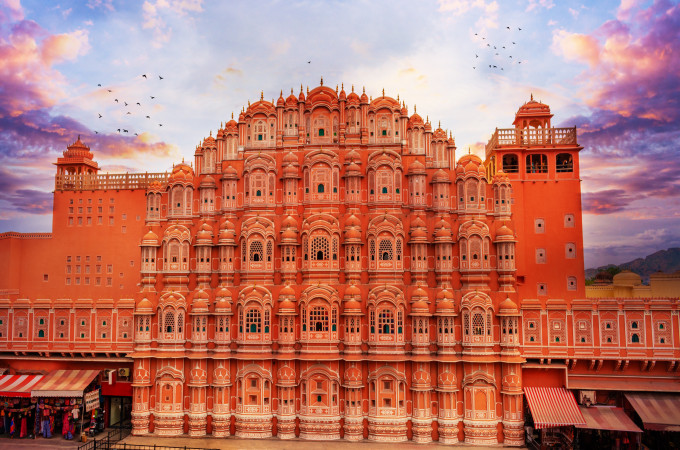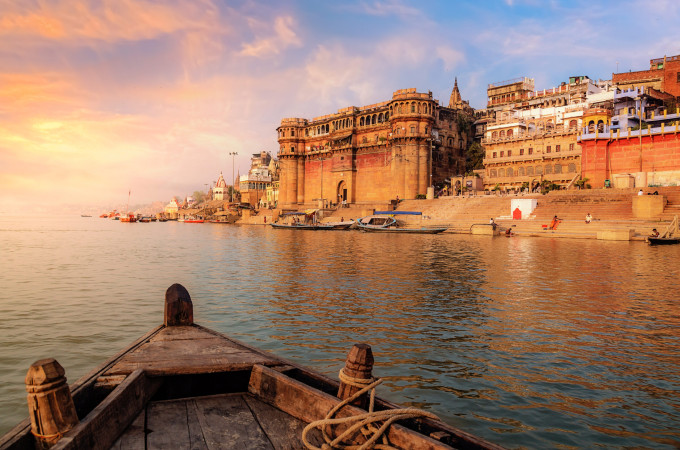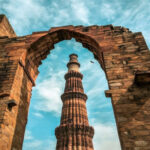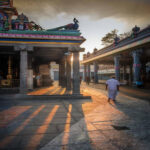India is one of the best value-for-money destinations in the world.
On offer in India for tourists are histories and cultures dating back thousands of years; the towering mountains of the Himalayas, divine rivers like the Ganges and Brahmaputra and ancient spiritual cities like Varanasi, Rishikesh and Mathura.
Some of mankind’s greatest landmarks like the Taj Mahal, the Red Fort, Jaipur’s City Palace, Khajuraho’s Temples, Ajanta & Ellora Cave Temples and Hampi ruins are located in India.
Generally considered a very affordable country to travel to, you do not have to break the bank to be able to afford a trip to India.
In comparison to other popular tourist destinations of the world like Switzerland, France, Italy or the United States, India is much cheaper.
However, India is a vast sprawling subcontinent with a kaleidoscope of sceneries, landscapes, sights and attractions. Navigating them can be quite challenging.
If you do not plan and budget your travel wisely, you will end up spending more money than you should. Remember cheap does not mean it is free.
How much you spend in India depends on a variety of factors, including but not limited to your personal preferences, the duration of your stay in India, the destinations you pick to travel to, the kind of accommodations you wish to stay in and the quality of transportation you choose.
In this article, we will cover all aspects of budgeting a trip to India, delve into the overall cost of the trip and offer valuable tips to help you get more bang for your buck.
Let’s get started.
Things To Consider For Budgeting A Trip To India
Flights and Transportation
The biggest chunk of the cost of travel to India is likely to be accrued by how you travel to India.
Airfare to India may vary and depend upon where you travel to India from, what time of the year you are travelling and the Indian region you choose to travel to.
If you are travelling to India in peak tourist season (November to March), expect airfare to be on the higher side. It is also the time of the year when Non-Resident Indians (NRIs) from the Gulf, North America and Europe are also likely to be travelling back to India during their winter breaks. Flights during this period are often full and pricey.
If you are travelling to India during the shoulder season (September-October) or the summer (April-August) flights might be cheaper but it is also not the ideal time to travel to India as it gets quite hot and humid during these months.
We therefore recommend that you do your due diligence well in advance. Here is what you can do:
Book your flights well in advance and get good deals on your airfare. 1,000-1,300$ is a ballpark figure for a return flight to India from the North American or the European continent for economy classes, whereas for First Class classes the figure is usually around 2,500$-4,000$.
Visa Fee
Travellers from most countries of the world require a tourist visa to get to India. The cost may vary depending upon which country you are from and the type of visa you are applying to.
Before booking a flight, check the visa requirements to India for your country.
India also offers Electronic Visas for many countries of the world. For more information, please consult this official link of the Indian Government for further clarity: https://indianvisaonline.gov.in/evisa/tvoa.html:
The process is quite easy and it usually takes only 3 working days for the application to be processed.
Cost of Accommodation
The second biggest expense after transport is likely to be your accommodation, which in turn depends upon the kind and quality of the hotel, guest house or resort you want to stay in, their location, duration and time of the year.
Here is a loose breakdown of the cost of accommodation in India.
Budget Hotel Room Cost in India: 30-40$
Midrange Hotel or Boutique Hotel Cost in India: 50-80$
5 stars (like a Courtyard by Marriott) in India: 120-200$
Top end Luxury hotels and resorts in India: 300 – 1500$
It is important to consider that a budget hotel room can be quite basic with a bed and an attached washroom. The establishment is unlikely to have many additional amenities.
If you are travelling with your partner or kids, we recommend that you avoid budget options and upgrade to better hotels where you are likely to have all the modern amenities like luxurious rooms, 24/7 room service and front desk, a swimming pool, in-house restaurant, a fitness center, sauna and a spa.
When you visit India, we also recommend that you occasionally splurge money on accommodation and stay briefly at a Palace-turned-heritage hotel or a Haveli (medieval mansion—India’s answer to a European castle) in places like Jaipur, Delhi, Udaipur or Jodhpur.
Expect to pay a little more than you would at other places but for a glimpse into the lives and ways of a Maharaja, we think it is worth it.
Transportation Within India
(Flights, Trains, Buses)
India is a mammoth subcontinent of 1.4 billion people. Getting from point A to point B can take time, resources and some hassle as well.
Unless you want to restrict yourself to one particular tourist region in India —say Kerala in the South or the Golden Triangle Circuit (Delhi, Agra, Jaipur) in the North—you are going to have to travel a lot to cover most of the must-see sights and destinations.
Here is a run-down of how you can travel across India and how much it will cost you.
One week you might be marveling at the grandeur of Mughal monuments in Delhi, another week you might find yourself in the idyllic snow-clad mountains of Kashmir, Ladakh or Himachal Pradesh in the Himalayan, followed by a desert safari in the Thar Desert or a serene houseboat dawdling its way through the picturesque backwaters of Kerala.
In the end, you might also want to treat yourself to a posh pampering spa experience in a tropical paradise like Goa or the Andaman Islands.
How much this will cost you will, of course, depend on how many regions you want to cover, the time of the year you want to go in and the mode and quality of transportation you prefer.
Trains
The Indian train service takes you to the heart of the matter in India.
Traversing old town, cities, and rural heartlands, journeys aboard the Indian train is a voyage into the heart and soul of India and gives you a great insight into the Indian way of life outside of the tourist circuits.
Generally, the most affordable form of transportation within India is the train. With 23 million passengers being carried around daily —equivalent to the entire population of Australia—the Indian Railway System is a miracle that keeps India running and connects its disparate remote parts to one single whole.
While traveling in low-budget compartments or trains may be discomforting, there are now good quality luxury train services that operate on popular tourist routes.
NOTE: Bear in mind that during peak seasons, festivals or holidays, tickets can sell out on popular routes, so you should be booking your tickets well in advance.
Air-conditioned (AC) classes (Three Tier AC, Two Tier AC and First AC) are cozy, comfortable and swift and are taken by those that can afford to pay higher fares as opposed to the low-budget UR (Unreserved General Class).
Trains like Rajdhani Express, Shatabdi and Vande Bharat are the fastest options to get around.
Visit our page __________________________ for more details on the Indian train service and how to go about booking your travels.
Autorickshaws and Taxis
Local autorickshaws or tuk-tuks and taxis are also very affordable and you won’t have to spend a fortune to get around within cities in India.
In general, commutes within cities may cost you only around 15-20$ per day.
Uber is available in all metros and mid-sized cities except GOA.
Domestic Flights
Thanks to rapid economic growth and a thriving tourism industry, domestic flight networks in India have steadily grown with new routes, regional airports and the emergence of new commercial local airlines.
Getting from one part of India, especially hopping from the north of India to the southern coastal region is now manageable with affordable airlines. Booked in advance, such a flight may cost you around 80-150$ per person.
Buses
Buses are one of the cheapest ways to travel in India.
They are the most common means of transportation between cities and towns that are located at short distances. Most journeys in Indian buses would cost you less than a dollar per hour.
But bear in mind that buses can get crowded and there might be frequent stops en route. So, if you value your comfort and privacy, you are better off hiring a private vehicle for such journeys. For more safety and security, prefer booking through your hotel or touring operator.
Cost of Food in India – How much is a meal in India?
In comparison to the Western hemisphere, food in India is considerably affordable. India is one of the best places in the world for culinary adventure.
It truly is a gourmet paradise. With sumptuous dishes, varied cuisines and culinary traditions across regions and a broad range of budget options to choose from, when it comes to food you are spoiled for choice as a foodie.
Fine dining at a good quality restaurant in India or ordering takeout may cost significantly lesser than in the US or Europe.
If you go to a reasonable sit-down restaurant, a coveted local dish like rice and curry will cost you around 4-5$ per dish. Street food may typically cost around 1-2$ per snack.
There is exquisite world-class Michele-star-level dining for high-end clientele in posh restaurants as well, like the Indian Accent and Peshawari in New Delhi which serve multiple-course meals featuring Indian and global cuisines. A posh dinner at these fine establishments may cost you around Rs 5,000 Indian Rupees (60$) for two persons.
With such affordability, it is still important to do your due diligence and only eat at restaurants and food stalls that offer fresh hygienically prepared food. The way to do that is to research online or talk to a local for advice.
India is well-connected to the technological and social media ecosystems. A simple Google search or search on YouTube, Facebook or Instagram will give you a good list of the best food outlets in a particular city.
If you are on a tight budget but still want to enjoy satiating wholesome meals, we recommend that you look into discount offers on lunch and dinner Thali Deals.
A “Thali” is a traditional Indian plate that carries a wholesome affordable platter that typically comprises a variety of dishes and food items like rice, bread, Dal (lentil), vegetables and meat or fish dishes with small portions of accompaniments like pickles, chutney, Raita (yogurt sauce) and a lump of sweet meat. You have the option of ordering a vegetarian Thali as well.
Sightseeing Activities and Entry Fees for Attractions
One expense you might not think of much but one that keeps adding substantially is the entrance fee you will have to pay to see the top landmarks in India.
Foreigners get charged a little more than locals, and the money raised is used by the authorities for the upkeep of these sites.
Children under the age of 15 are usually free to enter, but foreign adults as well as Indians have to pay to enter.
Set aside a total of 80-100$ per person if you plan to visit historical and cultural landmarks in cities like Delhi, Agra and Rajasthan.
In other places like Goa or Kerala, where there are more natural and landscape landmarks and fewer sites that require entrance fees, you might not have to spend as much.
Shopping
India is a Shopper’s paradise to buy traditional handicrafts & artifacts, jewelry, textiles & fabrics, spices and tea, rugs and carpets. In comparison to the West, East Asia, and Latin America, India is an affordable retail therapy heaven.
Usually, bargaining for prices is common practice and you are likely to be quoted an inflated price for an item.
Learn to up your bargaining game and start by throwing some lowball offers. Shopkeepers and buyers tend to go back and forth over prices.
EXTRA TIP: Be ready to walk away from a purchase if the price doesn’t seem right. You might get a shout for a reduced offer.
Travel Insurance
Things can go wrong in travel anywhere in the world. There may be an unfortunate accident, a natural calamity, a last-minute cancellation or an unforeseen mishap.
Therefore we recommend that you purchase a good quality travel insurance package that covers all of these things. It might cost you a few extra bucks but it is worth the peace of mind and assurance that it gives you.
Tipping
Another relatively minor expense —but one that might keep adding up— is tipping. It is common practice in the tourism and hospitality industry to tip service providers like drivers, guides, porters, waiters and guides as a way of showing appreciation and gratitude.
As a general rule of thumb, a typical tip should range from 5 to 10% of the total amount you are billed at restaurants, taxis, guided tours and spas.
TIP: If you have been billed a “service charge,” then you are not expected to tip as that amount covers tips for service providers.
For a more detailed overview of tipping etiquette and customs in India, check out our page “TIPPING IN INDIA.”
Health Precautions
If you have any allergies or recurring illnesses, be sure to discuss them with your doctor before travelling to India.
Get vaccinated against infections the region is prone to. Pack a medical kit with some diarrhea medicines, painkillers and anti-nausea medicines recommended by your doctors.
Always stay on bottled water. Strictly avoid tap water.
ATMS AND CASH
ATMs are readily available all over India in banks, supermarkets and busy commercial areas in cities around India. Debit and Credit cards are also accepted in restaurants and retail outlets.
But if you venture out to remote rural areas and small towns, be sure to carry cash on you. Cash is still king in the countryside.
Currency exchange services are also available on arrival in airports and main cities.
TIPS FOR COST-SAVING IN INDIA
Here are a few more cost-saving tips for travel in India:
- Travel in the shoulder and off-season (April to October) can reduce your cost of travel drastically as flights, accommodations and prices are generally very low during this time of the year. But bear in mind that the region is prone to heat, humidity and monsoon rains during these months.
- Catching early-morning flights and overnight trains can save you substantial sums.
- Snack instead of dining, if you are on a tight budget can save you a lot of money. Sit-in dining restaurants are pricier. Fast food outlets and street food stalls are affordable alternatives.
- In traditional Indian bazaars, you have to haggle and bargain over prices. It is common practice and don’t feel ashamed to occasionally lowball and bargain against the stated price which is usually an inflated price. You are expecting to meet the shopkeeper somewhere in the middle between their highballing and your lowballing.
Frequently Asked Questions About The Cost Of Travel In India
Is travelling expensive in India?
India is a very affordable place to travel in, in comparison to other major tourist regions in the world.
The tourism infrastructure which is thriving thanks to the rising number of tourists caters to a variety of budget options, ranging from low-budget dorm-room backpacking to mid and high-end 5-star travel at par with luxury travel experiences elsewhere in the world.
In contrast to travel in Europe, the United States, Latin America and East Asia, travel in India is going to be considerably affordable.
How much does a 7-day trip to India cost?
The average price of a 7-day trip to India will depend upon your choice of accommodations, types of travel experiences, dining choices and modes of transportation.
However, a well-rounded 7-day trip that covers the must-see destinations accompanied by wholesome experiences like sightseeing, culinary adventures and a little bit of shopping should cost you around 1,200-1,400$ for a single person and around 2,500$ for a couple.
This price does not include the cost of travel to India. On average a flight to India from Europe or the US will cost you around 1,000-1,500$ for economy class depending upon the time of the year you are traveling in and 3,500-5,000$ for first class.
How much money is needed to visit the whole of India?
India is so mammoth, it is probably not possible to see all of it in a whole lifetime.
But you can try and single out the must-see destinations from the snowy peaks of the Himalayas to the serene coastal paradises of Kerala and everything in between.
For Budget travellers who backpacking their way through India, staying at low-budget accommodations and traveling by cheap buses and trains, a ballpark figure for a 3-month long stay in India could be as little as 7,000-8,000$.
For mid-range travel experiences with relatively better accommodations and experiences, we estimate the cost to be around 10,000-12,000$.
For a high-end stay, the cost could be around 20,000-25,000$.
Is India cheap for tourists?
India is quite an affordable destination. If you are on a tight budget, there are many options for you like affordable dorms, guest houses, AirBnBs and homestays. You can also get around affordably via the all-encompassing Indian railway network and buses which will cost you less than a dollar per hour of travel. Lastly, you can save money by snacking and eating at street food stalls and fast food joints as opposed to pricey sit-in restaurants.
How much does a luxury vacation cost in India?
The cost of a luxury vacation in India depends upon the kind of luxury experiences you want to avail yourself of, the time of the year you want to travel in, the kind of accommodations you want to stay in, and the bespoke experiences you want to treat yourself. So the potential cost of such a trip may vary depending upon the kind of choices you make about these things.
However, we estimate that a two-week long well-rounded itinerary that covers major tourist destinations like Delhi, Agra, Rajasthan (Jaipur, Udaipur, Jodhpur, and Jaisalmer), Kerala, Mumbai, Goa, and a relaxing stay at a hill station in the Himalaya will cost you around 5000-6000$.
This cost will cover in-country travel, accommodations at 5-star hotels, spa experiences, high-end travel including domestic flights, and other bespoke and curated experience that you might be interested in.
How much money do I need to travel around India for 6 months?
The cost for a 6-month-long leisurely sojourn will depend upon the kind of lifestyle you want to avail for yourself, the places you want to stay in, and the ways you choose to travel in the country.
Budget travellers backpacking their way across India, travelling by cheap buses, and trains and staying at low-budget dorms and guest houses can get by for as little as 10,000-12,000 $.
For mid-range travel bespoke experiences with relatively better accommodations and experiences, we estimate the total cost to be around 13,000-15,000 $.
For a high-end stay, the cost could be around 25,000-30,000 $.
 Skip to main content
Skip to footer
Skip to main content
Skip to footer
